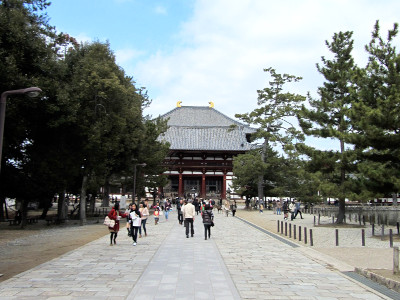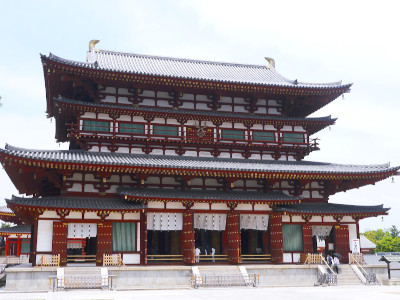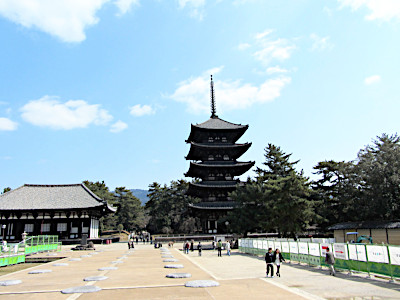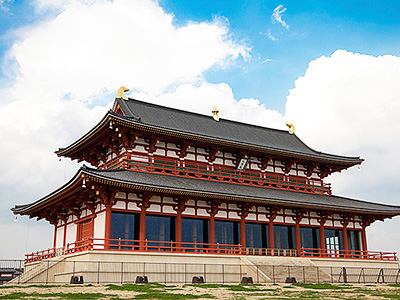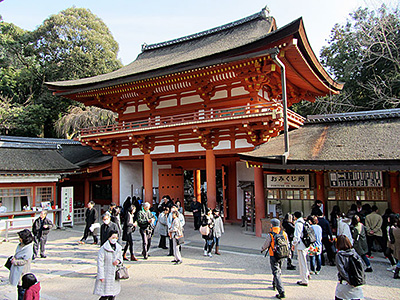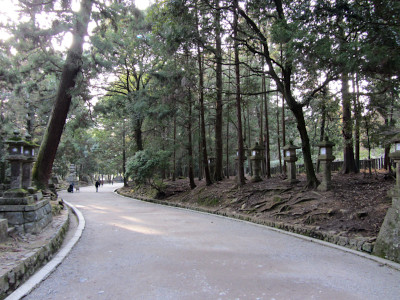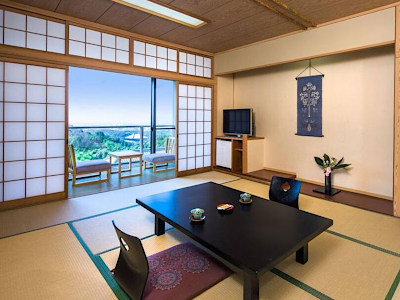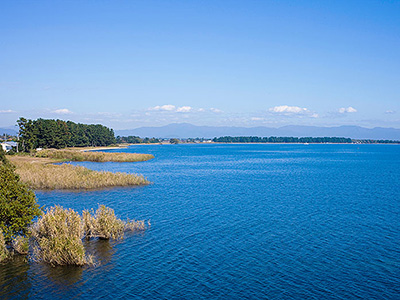UNESCO World Heritage Sites in Nara
This post can contain affiliate links, which means that we may receive a small commission if you make a purchase using these links.
Facts & Figures
Nara has in total 8 UNESCO World Heritage Sites, which are grouped under the label Historic Monuments of Ancient Nara. If you stay only for one or two days in the city it is nearly impossible to visit all of these historically important places (5 Buddhist temples, 1 Shinto shrine, a palace, and a primeval forest). So far I have seen 6 out of 8 places and sorted them by my personal wow factor:) As a side note, this list is not covering all the sightseeing highlights in Nara. For example, the beautiful Isuien Garden or Ukimido Gazebo are not part of it. The World Heritage status was given to Nara and its important places in 1998.
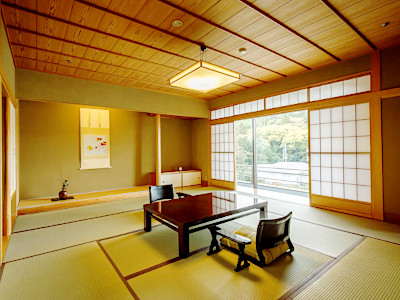 Best Places to Stay in Kyoto >
Best Places to Stay in Kyoto >
Overview of the 8 Historic Monuments of Ancient Nara
Todaiji Temple
The Todaiji Temple ("Great Eastern Temple") in Nara is a UNESCO World Heritage Site and one of the most important Buddhist temples in Japan. It is also the center of the Kegon sect of Japanese Buddhism. The main hall of the temple complex is called Daibutsuden (Great Buddha Hall). Daibutsuden is with a height of 49 meters the world's largest wooden building. Todaiji was commissioned by Emperor Shomu (724 - 749). The temple complex was finally completed in 752 after 15 years of construction.
Read More
Yakushiji Temple
The Yakushiji Temple complex is dedicated to the Healing/Medicine Buddha called Yakushi Nyorai. Emperor Temmu (631 – 686) gave the order to build Yakushiji in 680. With a history of over 1300 years, it is one of the oldest temples in Japan. In 1998 the Buddhist temple was named a UNESCO World Heritage Site under the label Historic Monuments of Ancient Nara. It is also the headquarters of the Hosso sect of Japanese Buddhism.
Read More
Kofukuji Temple
The Kofukuji Temple complex has a history of over 1300 years. In 1998 the Buddhist temple was named a UNESCO World Heritage Site under the label Historic Monuments of Ancient Nara. Four buildings of Kofukuji have the status of national treasures and these are the Five-Story Pagoda (Goju-no-to), Three-Story Pagoda (Sanju-no-to), Tokondo (Eastern Golden Hall), and Hokuendo (Northern Octagonal Hall).
Read More
Heijo Palace
The former Imperial Palace served as the emperor's residence from 710 to 784 (Nara Period). After the decision was made in 784 to move the capital of Japan from Nara to Heian-kyo (now Kyoto) the decline of the Heijo Palace started. It took till the beginning of the Kamakura Period (1185 – 1333) that most of the palace buildings were destroyed. In recent years three major buildings were reconstructed.
Read More
Kasuga Taisha Shrine
Kasuga Taisha Shrine, a designated National Treasure, is one of the most famous Shinto Shrines in Japan. It is also the head shrine for around 3000 Kasuga Shrines within Japan. One outstanding feature of the shrine is more than 1000 bronze lanterns known as Mantoro donated by worshippers. The Fujiwara family, a powerful clan of regents during Nara (710 - 794) and Heian Periods (794 - 1185), established the shrine in 768.
Read More
Kasugayama Primeval Forest
The forest is located right behind the Kasuga Taisha Shrine in Nara. Kasugayama Primeval Forest covers an area of 2.98 square kilometers near the top of sacred Mount Kasuga. No tree has been chopped here for the last 1000 years. The biodiversity of this place is incredible with 175 different kinds of trees, like the oaks and beech trees, 60 bird types, and 1180 insect species. The forest was designated as a special natural monument in 1955 and got the status of a UNESCO World Heritage Site in 1998.
Toshodaiji Temple
Toshodaiji dates back to 759. It is the head temple of the Ritsu Buddhist school. A Chinese priest with the name Ganjin (688 - 763) was the founding father. He got an invitation by the Emperor Shomu (701 - 756) to teach Buddhism in Japan. The Main Hall (Kondo) opened to the public in 2009 after a long renovation period of nearly 10 years. The temple is located in the western part of Nara.
Gangoji Temple
Gangoji was founded in Asuka by Soga no Umako (551 - 626), a member of the powerful Soga clan. It is one of the oldest temples in Japan and was moved to Nara in 718. Gangoji has the status of a UNESCO World Heritage Site. The highlights are the two National Treasures, which are the Gokuraku-do (Hall of Pure Land or Mandala Hall) and the Zen Shitsu (Contemplation Hall). You will find in the temple’s Treasure House a miniature 5.5-meter tall Five Storied Pagoda (Goju-shoto). The only original building is the Zenshitsu hall at the rear.
My tips for local activities
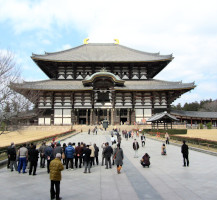
How about exploring the highlights and hidden gems of the fascinating city Nara with a local guide? The personalized tour by our partner GetYourGuide can take between 2 - 6 hours. For more details check out this page >

